Depart from Rovos Rail Station, Pretoria
At 10h00, depart from Rovos Rail Station in Pretoria. Guests may freshen up in their suites before joining fellow travellers in the lounge cars. The train travels on the eastern line towards the harsh eMalahleni coal-mining area and Middelburg, known as the “stainless steel capital of Africa”. The Dutch railway building company, NZASM, built the eastern line between Pretoria and Lourenço Marques (Maputo) from 1893 to 1895.
19h30 – Dinner is served in the dining cars. Dress: Formal
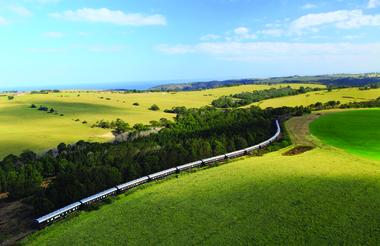
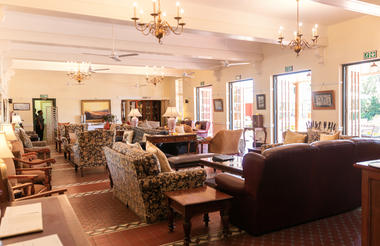
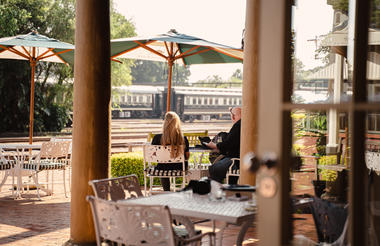
Panorama Route
Pilgrim’s Rest is a living museum and declared a National Monument. Gold was discovered in this area in 1873 attracting 1500 prospectors. Today many of the restored miner’s houses serve as shops and restaurants. Bourke’s Luck Potholes are strange deep cylindrical cavities formed by river erosion and floodwater. Blyde River Canyon Nature Reserve has the most spectacular viewpoints overlooking South Africa’s Lowveld, so named because it is much lower than the high escarpment along which the Panorama Route runs.
Enjoy a full-day tour of historical areas Pilgrim’s Rest, Bourke’s Luck Potholes and Graskop with lunch. The Graskop viewing lift (own account) descends 51m down the face of the gorge into the forest below where wooden walkways and suspension bridges meander along a 600m trail through the indigenous forest with an interactive exhibit.
18h45 – Return to the train in Mbombela (140km). Depart for Malelane.
19h30 – Dinner is served in the dining cars. Dress: Formal

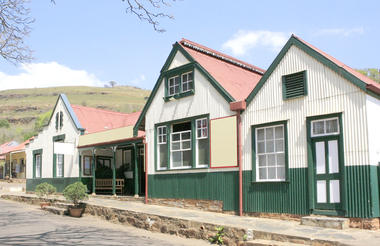
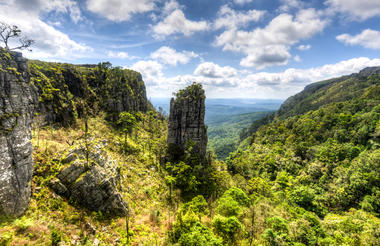
Kruger National Park
The famous Kruger Park has 2-million hectares of an unrivalled diversity of life forms. It is a world leader in advanced environmental management techniques and home to an impressive number of species, e.g. 336 species of trees, 49 species of fish, 34 species of amphibians, 114 species of reptiles, 507 species of birds and 147 species of mammals including the Big Five.
Enjoy full-day game viewing in the Kruger Park with lunch. In the late afternoon, the train departs for Maputo, Mozambique. Border formalities take place on the way.
19h30 – Dinner is served in the dining cars. Dress: Formal



Maputo, Mozambique
Capital of Mozambique, Maputo is a city of contrasts offering an exciting mix of cultures. Its architecture is a blend of African, Portuguese and early Colonial traditions with old Catholic churches side-by-side with mosques, fortresses, Victorian mansions and other buildings from a bygone era.
After breakfast, enjoy a city tour of Maputo. In the late afternoon, travel to Mpaka, eSwatini. Border formalities take place on the way.
19h30 – Dinner is served in the dining cars. Dress: Formal

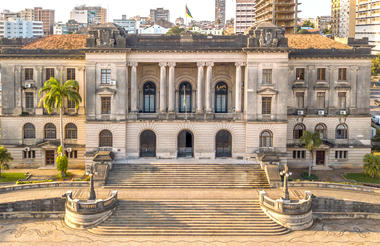

eSwatini
The tiny Kingdom of eSwatini (Swaziland) covers only 17 000km², most of which is mountainous. For such a small country, it is surprising that it sustains two capital cities: Mbabane is the administrative capital and Lobamba is the royal and legislative capital. In April 2018, Swaziland changed its name to the Kingdom of eSwatini (meaning “place of the Swazi”) and is an absolute monarchy. It is landlocked and borders South Africa and Mozambique.
Disembark at Mpaka and transfer (±90 min) to Swazi Candles and visit Mantenga Cultural Village with lunch at Mantenga Lodge.
At Swazi Candles, guests are invited to interact with the artisans as they make a variety of candles. Woodcarvings, colourful textiles and superb basketwork are also on display. Mantenga Cultural Village is a living museum of old traditions representing a classical Swazi lifestyle during the 1800s. With the traditional artifacts on display, the village illustrates many facets of the ancient Swazi way of life: social, economic and religious. Mantenga Lodge is nestled in the mountains overlooking ‘Execution Rock’.
In the early afternoon, return to the train and depart for Hoedspruit. Border formalities take place on the way.
19h30 – Dinner is served in the dining cars. Dress: Formal



Kapama Reserve & Hoedspruit Endangered Species Centre
Situated in South Africa’s northernmost province of Limpopo, renowned for its prolific and diverse wildlife, Kapama Private Game Reserve is home to over 40 different mammal species including the Big Five, approximately 350 bird species and a myriad smaller species. The Hoedspruit Endangered Species Centre is a unique African wildlife facility focusing on conservation and the sustainability of rare, vulnerable and threatened species. Founded on passion, the centre has adopted a holistic approach to its conservation activities such as the educating of surrounding communities, tourism, breeding, rehabilitation and anti-poaching, to name a few.
Enjoy an early morning game drive in Kapama Game Reserve, followed by a visit to the Hoedspruit Endangered Species Centre. At noon, return to the train for lunch and depart for Tzaneen and Louis Trichardt.
19h30 – Dinner is served in the dining cars. Dress: “Africa” Theme or Smart Casual
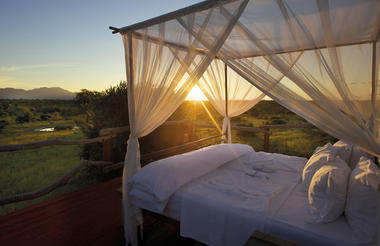

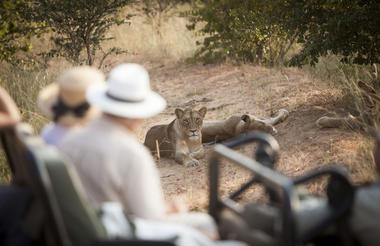
Day at leisure on board
Limpopo Province is located in the far north of South Africa and shares borders with three neighbouring countries: Botswana, Zimbabwe and Mozambique. For this reason, the province is also known as the gateway to other African countries and also shares provincial borders with Gauteng, Mpumalanga and Northwest. The Limpopo landscape varies from one area to the other from tropical forests, bush and shrubs to semi-desert areas with small trees and bushes and mountains to flat land. Limpopo is divided into five regions, strategically located according to the cultural inhabitants. Capricorn is the central region predominantly occupied by the Bapedi people. Waterberg is the largest region with a majority of Tswana people. Vhembe in the far north is dominated by Vhavenda and Vatsonga. The Mopani region near the Kruger Park is Vatsonga whereas the Sekhukhuni region is dominated by Bapedi and Ndebele. Limpopo is the only province in South Africa with more than two cultural groups staying together in their original habitat in harmony. Other ethnic groups include English and Afrikaans people.
Spend the day on board the train whilst traversing the Limpopo Province en route to Rutenga in Zimbabwe.
19h30 – Dinner is served in the dining cars. Dress: Formal
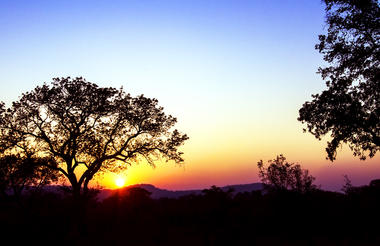
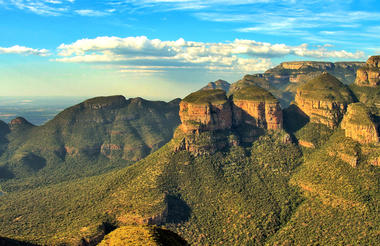
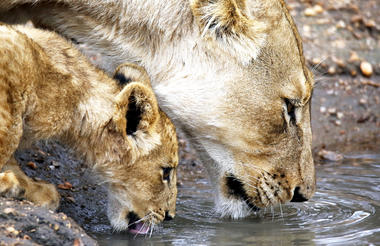
Great Zimbabwe Monument
Travel through attractive granite hill country to the Great Zimbabwe Monument, a hugely impressive monument situated on the southeastern edge of the central plateau and the largest precolonial monument south of the Egyptian pyramids. A celebrated achievement of the African people and a place where magical fables such as the story of King Solomon’s Mines find their origins amongst the ruins of an ancient city built by the Rozwi people. Discover how these ancient people lived and mined gold and silver, which were ultimately taken out of Africa by Arabic and Portuguese traders.
After breakfast, transfer to the Great Zimbabwe Monument for a tour with lunch. In the late afternoon, re-join the train at Oreti Siding and depart for Gweru.
19h30 – Dinner is served in the dining cars. Dress: Formal



Antelope Park
Set in over 3000 acres of open savannah grassland, Antelope Park is a unique game reserve and a haven of tranquillity welcoming guests and volunteer eco-tourists alike. It is home to the world-famous African Lion and Environmental Research Trust (ALERT) lion rehabilitation programme, which is a multiphase lion conservation initiative. It is Africa’s first genuine programme working to ethically re-introduce the offspring of captive-bred African lions back into the wild.
After breakfast, depart for a full day at Antelope Park with lunch. (Optional extras include canoeing, game drives, horseback game viewing, elephant interaction, bird-watching cruises and so on.) Depart for Bulawayo in the late afternoon.
19h30 – Dinner is served in the dining cars. Dress: Formal
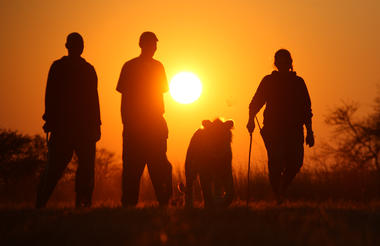
Matobo National Park
Matobo (or Matopos), meaning ‘bald heads’, was the name chosen for the area by the Ndebele King, Mzilikazi. He is buried in the Matobo hills just a short distance from the park. It is an apt description of the dramatic hills and granite rocks of this area. The park is also the site of Cecil John Rhodes’ grave at the summit of Malindidzimu – ‘hill of benevolent spirits’. He referred to this hill as having a view of the world. His grave is carved out of solid granite and surrounded by a natural amphitheatre of boulders. A visit can be made to one of the more accessible bushman caves, of which there are many hidden amongst the hills. Matobo is a UNESCO World Heritage Site.
Enjoy a full-day tour of Matobo National Park with lunch. Visit the grave of Cecil John Rhodes as well as bushmen caves with rock art. In the late afternoon, depart for Kennedy.
19h30 – Dinner is served in the dining cars. Dress: Formal
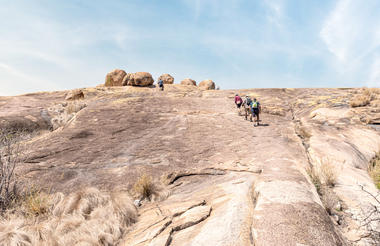
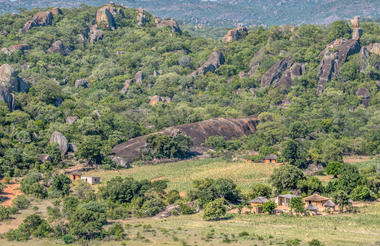
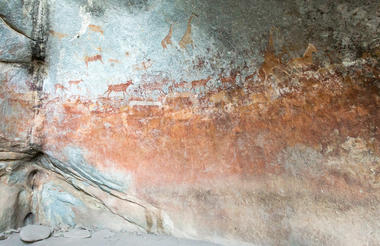
Hwange National Park
Situated in the northwest corner of Zimbabwe, Hwange National Park covers 1 462 000 hectares, making it the nation’s largest wildlife area. It contains a variety of animals and bird species but is well-known for its prolific lion population.
Spend the day game viewing in Hwange National Park with a packed lunch.
19h30 – Dinner is served in the dining cars. Depart for Thompson’s Junction. Dress: “1920s” Theme or Smart Casual
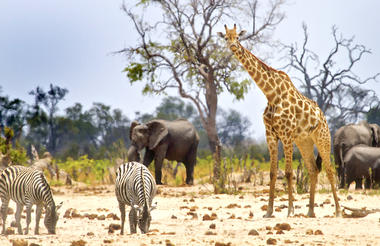
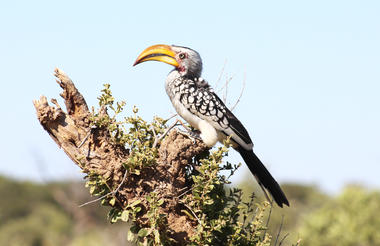
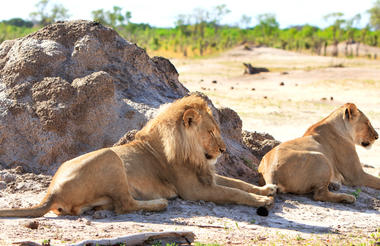
Arrive in Victoria Falls
The little station of Victoria Falls was first reached by railway in June 1904. Old colonial buildings, bougainvillea and palm trees against the backdrop of the Victoria Falls Hotel form a charming oasis of soft sweetness after the rugged dryness of the landscape. The Victoria Falls is one of nature’s great revelations on a par with the Grand Canyon, Mount Everest and an erupting volcano. It is believed that there have existed no less than seven different Victoria Falls over the past two million years. These cascades correspond to the lower gorges of the Zambezi. The present falls is wearing from Devil’s Cataract northwards, eroding the softer material behind the present basalt base of the falls. When eventually all the soft matter has been removed, the Victoria Falls will move back, a fresh gorge will yawn and where the falls are now will become a new site for tourists. Although just over a mile long (1.7km), the falls are broken up by various small islands, including Livingstone Island. At their deepest, the falls are 108m deep at Rainbow Falls.
Check out of the train upon arrival at Victoria Falls and enjoy a walking tour of the village and the Falls. Meet for a sunset cruise on the Zambezi River and end the tour with a transfer to Victoria Falls Hotel.








